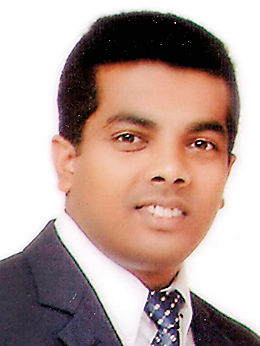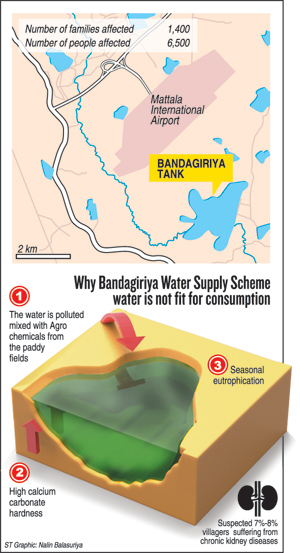News
Villagers struggle with water contaminated with salt and pesticides
Villagers struggling for the past 10 years over a water supply tainted with salinity, pesticide residues and mud – and sometimes no water at all – lost their patience and resorted to violent protests this week but their problems are still far from resolution.
“The water we receive passes through 22 irrigation tanks and all the paddy fields along the way before we receive it at the Bandagiriya tank.
The water is polluted, mixed with pesticides and fertiliser from the paddy fields,” the retired grama sevaka of Bandagiriwewa, near Hambantota, G. Andaraweera, said.
As a solution, an NGO, the Seva Lanka Foundation, affiliated with the Sewa Finance and Sewa Economic Development Company (SEDCO), launched a project in March 2003 to purify water from the Bandagiriya tank and provide it to the villagers in 2004.
The purifying unit was declared open by the previous president, Mahinda Rajapaksa. Thereafter the NGO handed over the project to the villagers, who have been running it for the past 10 years.
Mr. Andaraweera explained that during droughts the tank water became muddy and salty and to overcome that politicians had offered solutions such as getting water from Lunugamwehera or taking 500,000 litres from the Mattala airport supply but this was not enough.
From 2009-2011 there were times when the water level of the lake fell, resulting in algae infestation that made the water unsuited for consumption.
Following complaints from the villagers, the authorities supplied water from bowsers.
Problems continued, however, affecting some 1300 villagers.
A research study shows the villagers’ complaints about the lack of good drinking water are justified.

Prof Mangala de Silva
“Our research is continuing but we have found that the density of the water in the Bandagiriya tank is high,” said Professor Mangala de Silva of the Ruhunu University’s Zoological Department.
“This is likely because there is saltiness in the ground of the area and residue from chemicals and fertiliser coming across the paddy fields. Our conclusion is that the water is not fit for consumption.”
He said even tube wells in the area pump water with a high and unhealthy concentration of salt.
“Some villagers receive water brought in bowsers while a few others have obtained mainline connections. There is a major difference in the taste and texture of this water compared to the water in the Bandagiriya tank,” Prof. de Silva said.
Villagers claim they have fallen ill by drinking the water and at least 7 per cent of them were suffering from chronic kidney diseases but so far no research has been completed to determine whether the water they consumed caused the illness.
A spokesperson for Sevalanka Foundation said the community water purification plants had been set up in 1999-2000 as a Water Board project and this was one of the projects Sevalanka supported.
He said the foundation supplied supervision, manpower and funding while the Water Board carried out tests.
He explained at that time Water Board tests proved there were no pesticide residues but the villagers were not in favour of the project due to the fear that their water for cultivation would be diverted to other purposes as the project gained ground.
He said now the Water Board should intervene and provide advanced purification units.
An administrative official of the Bandagiriya Community Development Centre (Praja Sanwardena Kendra) admitted that the Bandagiriya tank’s water comes from water running through cultivation areas.
He said centre officials also noted the visible differences in water taken from Bandagiriya tank compared to the water supplied by the Water Board and also suggested that the Water Board take over the community project.
The suggestion was made when the Chairman of the Water Board, K.A. Ansar, visited the water purification unit last Wednesday.
He said the board was willing to put in a line from the water plant 3.5km away at Andaragasyaya, through Gannoruwa, in one-and-a-half years and until then would provide water from the tank through a boosted purification system.
Hambantota Divisional Secretary Sunitha Edirisuriya said the villagers could use water from tube wells and the tank for cultivation and use clean tap water for drinking purposes.
She claimed the people wasted tap water by using it to water plants and wash vehicles.
Mr. Ansar said he was not aware of the pesticide and fertiliser residues in the tank but would send officials to check both the lake water and the purifying plant. He would also provide water browsers and supply 500 litres of water per day from Mattala.

Villagers hold a protest. Pic by Rahul Samantha Hettiarachchi
He said the long-term solution of providing water from Andaragasyaya would cost Rs. 250 million and that work would start once the funding was approved.

